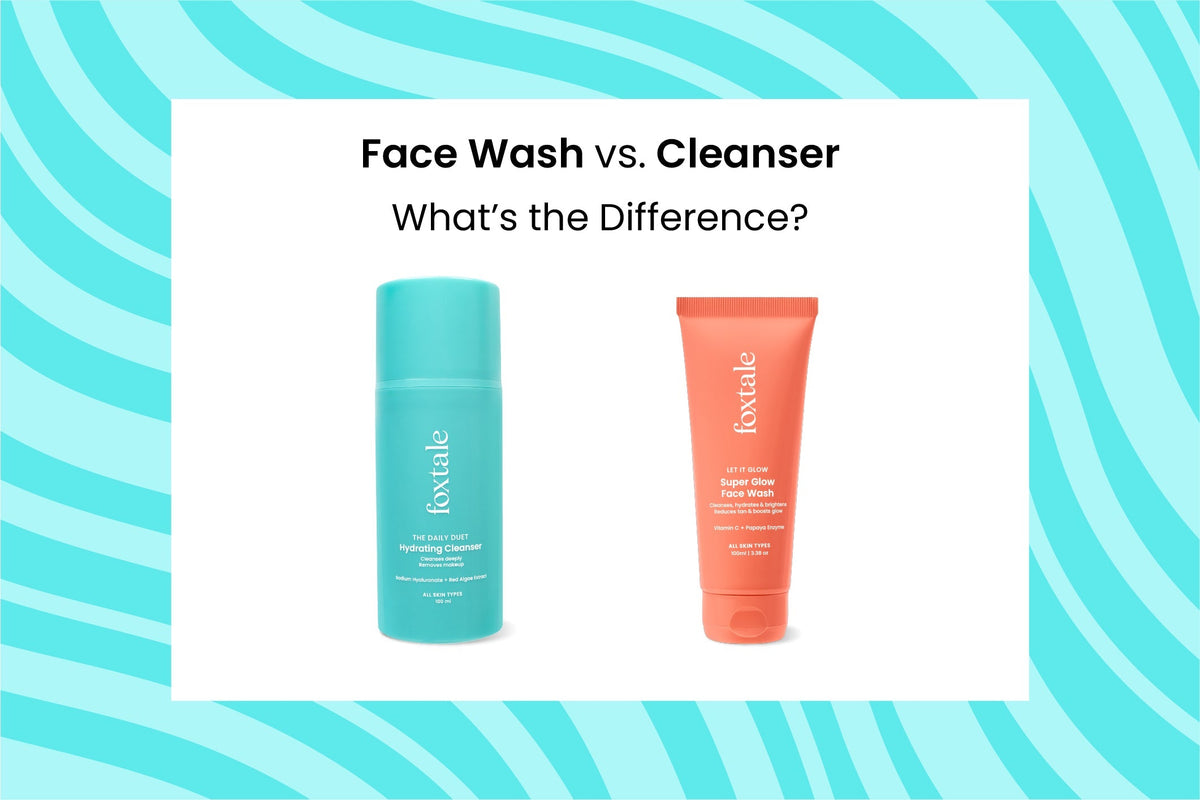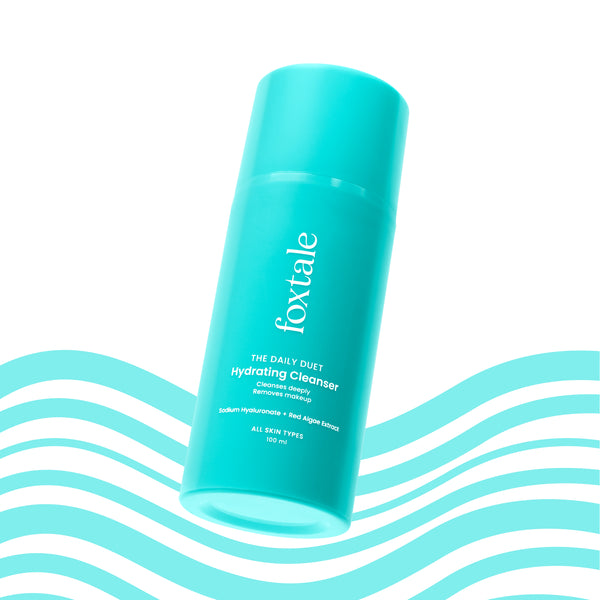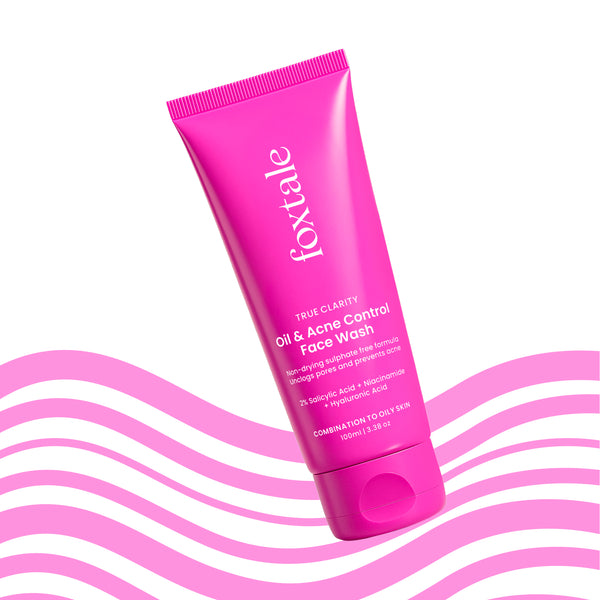
You’ve probably read a hundred skincare blogs that swear by starting with a clean canvas. But then comes the inevitable question: “Should I be using a face wash or a cleanser?” If you’re confused, trust us, you’re not the only one. While both are essential in their own right, many people use the terms interchangeably, often leading to confusion about what their skin actually needs. Lucky for you, we’re here to break down the difference between the two and help you figure out which one deserves a spot on your bathroom shelf.
What is a Face Wash?
Put simply, a face wash is your skin’s daily detox. Designed to deeply cleanse, it removes dirt, excess oil, and everyday grime, leaving your skin feeling refreshed. They’re usually water-based, either foaming or non-foaming and are meant to be rinsed off after use. When used twice daily, a face wash not only clears out clogged pores but also creates the perfect base for the rest of your skincare regimen.
What is a Cleanser?
Think of a cleanser as your skin’s calm, reliable friend. It works quietly to melt away dirt, oil, and makeup without leaving it tight or dry. Unlike face washes that can foam and potentially over-dry, cleansers are usually creamier or oil-based, ideal for those with dry, sensitive, or balanced skin. They do their job without stripping your skin, preserving its pH levels and keeping it comfortably hydrated.
Is Cleanser and Face Wash the Same?
Both face wash and cleanser are often tossed around like synonyms in beauty blogs, product labels, and casual conversation. The confusion usually comes from the fact that they serve the same core purpose – removing dirt, oil, and impurities. But here’s the catch: they do it in different ways. Face washes are typically foaming and more potent, making them ideal for oily or acne-prone skin. Cleansers, in contrast, tend to be gentler, creamier, and better suited for dry or sensitive skin. The key difference lies in how they interact with your skin and what your skin needs.
Difference Between Face Wash and Cleanser
|
Feature |
Face Wash |
Cleanser |
|
Purpose |
Targets impurities, oil, and sweat buildup for a thorough, pore-deep clean |
Takes off the day (makeup and all!) without leaving your skin feeling tight or dry |
|
Ingredients |
Often contains foaming agents like suplhates; may include acne-fighting ingredients like Salicylic Acid |
Usually includes hydrating and soothing ingredients like Glycerin, oils, and Ceramides |
|
Skin Types |
Best for oily and acne-prone skin types |
Suitable for dry, sensitive, and combination skin |
|
Texture |
Foamy or gel-based |
Creamy or oil-based |
|
Cleansing Power |
Stronger; offers a more thorough cleanse |
Milder; focuses on gentle cleansing |
|
Usage |
Ideal for morning routines or post-workout cleanses |
Great for evening routines or double cleansing. |
|
How It Works |
Lathers to wash away daily buildup from the surface |
Dissolves makeup, SPF, and grime by binding to impurities |
|
Suitability for Makeup Removal |
Less effective when it comes to removing stubborn or water-resistant makeup |
Designed for makeup removal, including long-wear and waterproof varieties |
|
Moisturization |
Can leave skin feeling dry or tight if overused |
Typically hydrating and leaves skin soft and supple |
What Should You Avoid in Face Washes and Cleansers?
Choosing the right face wash or cleanser isn’t just about what’s in it – it’s also about what’s not. Harsh ingredients like sulfates (think SLS and SLES) can strip away your skin’s natural moisture, leading to dryness and irritation. Parabens, often used to preserve products, have raised concerns due to their potential link to hormonal disruption. Then there’s alcohol, which may give you that tight, matte feeling but can end up damaging your skin barrier over time. And don’t be fooled by synthetic fragrances and dyes – they’re common culprits behind allergic reactions. To keep your skin happy and healthy, opt for formulas that are free from these irritants.
Cleanser or Face Wash: Which is Better for Your Skin?
Cleanser or face wash? it’s not about which one is better, it’s about which one is better for you.
Dry or sensitive skin? A creamy, comforting cleanser is your match. Try our Daily Duet Cleanser – your skin’s new BFF for a deep, hydrating cleanse that leaves you feeling fresh and dewy. Breakout-prone skin? Our Oil & Acne Control Face Wash is the one to swipe right on. It treats and prevents acne, controls oil and calm redness – all in just 7 days. For skin that’s dull or tanned from daily sun exposure, reach for our Super Glow Face Wash. With antioxidant-rich actives that support cellular renewal and brighten your complexion, it leaves your skin smooth, hydrated, and radiant after every wash.
Seasonal shifts matter too: lightweight, gel-based products are ideal during summer, while richer formulations soothe skin in colder months. And if makeup is part of your daily routine, opt for a cleanser that supports double cleansing or easily removes residue.
Conclusion
Think of it like this: some days your skin wants something that’s gentle and nourishing (hello, cleanser), and other days, you need something that can deep-clean the drama away (enter, face wash). The secret? Listening to your skin, switching things up with the seasons, and not being afraid to mix and match.
FAQs
1. What type of face wash works best for oily and acne-prone skin?
Look for one with ingredients such as Salicylic Acid, Tea Tree Oil, or Niacinamide – these ingredients help control excess sebum, unclog pores, and fight acne-causing bacteria. A good place to start would be our Oil & Acne Control Face Wash which is ideal for breakout-prone skin.
2. How many times should I wash my face?
Twice in total. Once in the morning and once before bed, is usually enough. Over-washing can strip your skin of its natural oils and trigger more oil production.
Can I use Salicylic Acid face wash everyday?
Yes, if your skin tolerates it well. Start with once a day, preferably at night, and increase to twice daily if needed. If you notice dryness or irritation, cut back.
3. How to wash face correctly?
Use a coin-sized amount of face wash and massage onto damp skin for 30 to 60 seconds using circular motions. Rinse thoroughly and pat dry with a clean towel Always follow up with a moisturizer, even if you have oily skin!





